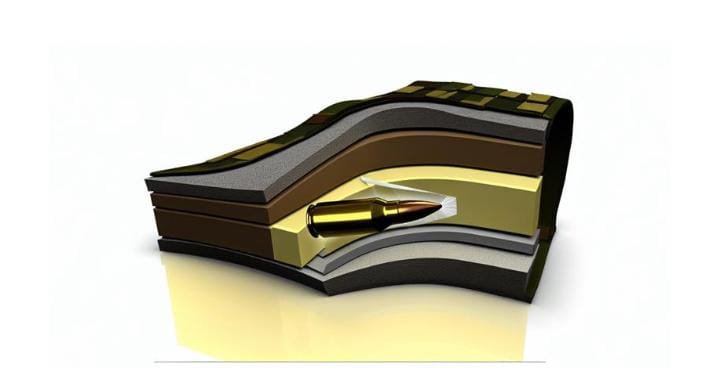At the point when you ponder shield halting a .308 rifle round, it’s not just about beast strength; it’s an intricate interchange of cutting edge materials and savvy plan. You could consider how slight layers of ceramic and Kevlar can stop such a strong projectile. Earthenware plates break upon influence, scattering active energy, while Kevlar filaments retain and fan out the power. In any case, that is only the start. There’s something else to comprehend about the complicated testing guidelines and why some protection works better compared to other people. Inquisitive about how these components meet up to safeguard lives? How about we investigate further.
The .308 Rifle Round
The .308 rifle round, otherwise called the 7.62x51mm NATO, is a strong cartridge generally utilized in both military and regular citizen applications. When terminated, a .308 round can accomplish an effect speed of roughly 2,800 feet each second, producing critical motor energy. This high effect speed adds to the round’s significant entrance profundity, permitting it to penetrate different obstructions and materials.
After hitting an objective, the shot goes through distortion relying upon the kind of shot utilized, like full metal coat (FMJ) or empty point. Shot disfigurement essentially influences the round’s capacity to infiltrate and move motor energy to the objective. FMJ adjusts will quite often keep up with their shape, bringing about more profound entrance profundities, while empty focuses develop influence, expanding the breadth and causing more critical tissue harm yet less infiltration.
Observational proof shows that the .308 round’s motor energy, regularly around 2,620 foot-pounds, is a basic figure deciding its entrance capacities. Understanding these elements is fundamental while examining the viability of protective layer intended to stop such a high-speed shot.
Remembering these qualities permits you to see the value in the intricacies engaged with countering the .308 rifle round.
Armor Materials
A few high level reinforcement materials have been created to counter the considerable infiltration capacities of a .308 rifle round. One of the essential materials utilized is earthenware plates. These plates are incredibly hard, permitting them to break and disperse the active energy of approaching rounds. Ceramic plates are regularly made out of materials like boron carbide or silicon carbide, which show high hardness and low thickness. When a .308 round strikes a clay plate, the ceramic cracks, spreading the power over a bigger region and diminishing the probability of entrance.
One more essential material in protective layer advancement is Kevlar strands. Kevlar is an engineered polymer known for its high rigidity to-weight proportion. When layered, Kevlar filaments make a thick, interlaced structure that can retain and scatter the energy from a .308 rifle round. Exact tests demonstrate the way that Kevlar can fundamentally lessen the speed of shots, limiting the gamble of deadly wounds.
Furthermore, Kevlar’s adaptability permits it to be incorporated into different defensive stuff without forfeiting portability.
Design and Construction
In planning and building covering equipped for halting a .308 rifle round, engineers should carefully adjust material properties, layering strategies, and primary honesty.
To begin with, you want to consider the material’s hardness and elasticity, which straightforwardly influence shot infiltration. High-hardness earthenware production like boron carbide are many times utilized as the essential strike face since they break the slug upon influence, disseminating its energy.
Then, center around protection thickness. While thicker reinforcement by and large gives better assurance, it likewise adds weight and diminishes versatility. Designs frequently utilize a multifaceted methodology, consolidating hard hit faces with milder, energy-retaining sponsorships like Kevlar or super high-sub-atomic weight polyethylene (UHMWPE). This design permits the underlying layer to break the projectile while resulting layers assimilate the excess motor energy.
Experimental proof demonstrates the way that an ideal equilibrium of these elements can really stop a .308 round. For example, a mix of a 6.5mm earthenware hit face with a 10mm UHMWPE backing has been demonstrated to stop shot entrance in controlled tests. Via cautiously aligning these components, you guarantee the covering gives greatest assurance without settling for less on weight and mobility.
Testing Standards
Understanding protection’s viability against a .308 rifle round requests thorough testing guidelines. You really want to realize that accreditation includes rigid testing techniques to guarantee unwavering quality. The Public Establishment of Equity (NIJ) sets the highest quality level for body protection accreditation. They utilize both effect reenactment and true situations to assess covering execution.
To begin with, the shield goes through controlled influence reenactment utilizing a .308 rifle round. This technique reproduces high-speed effects on measure infiltration obstruction and distortion. Exact estimations of backface misshapening are basic, as over the top twisting can in any case cause injury, regardless of whether entrance is forestalled.
Then, genuine situations test shield in conditions imitating real field use. Factors like point of effect, numerous hits, and ecological elements are thought of. This complete methodology guarantees the protection performs dependably under different circumstances you could experience.
For confirmation, the shield should pass both the effect reenactment and certifiable testing stages. Really at that time is it considered successful against a .308 rifle round. These thorough testing principles guarantee your covering gives the vital assurance in hazardous circumstances. By understanding these strategies, you can come to informed conclusions about the best covering for your necessities.
Ballistic Resistance
While assessing ballistic obstruction, taking into account the material structure and plan of the armor is urgent. Materials like Kevlar, UHMWPE, and pottery offer fluctuating levels of adequacy against projectile infiltration and effect speed.
Kevlar, a manufactured fiber, gives phenomenal elasticity, however its proficiency lessens with higher effect speeds common of a .308 rifle round. On the other hand, UHMWPE (Super High-Sub-atomic Weight Polyethylene) is lighter and offers better execution at higher speeds because of its predominant energy ingestion properties.
Ceramic plates, frequently utilized related to delicate protection, are especially viable at scattering the active energy from high-speed adjusts. When a .308 round influences a ceramic plate, the plate’s hardness makes the shot piece, lessening entrance. This fracture, joined with the plate’s capacity to ingest and spread the power across a bigger region, essentially mitigates the shot’s deadly potential.
Observational investigations show that diverse covering frameworks joining various materials can upgrade generally speaking ballistic obstruction. For instance, a ceramic front layer matched with a Kevlar or UHMWPE backing gives a vigorous guard against high-speed influences. By understanding these material properties and plan standards, you can more readily evaluate a defensive layer’s capacity to stop a .308 rifle round.
Choosing the Right Armor
Choosing the right shield that stops a .308 rifle round requires a nitty gritty comprehension of the different choices accessible and their particular execution qualities. You really want to consider covering determination in view of material structure, thickness, and the protective layer’s capacity to retain and disseminate active energy. High-hardness steel and ceramic composites are normal decisions because of their predominant effect opposition.
Exact proof shows that level III and IV plates, ensured by the Public Foundation of Equity (NIJ), are successful against .308 rounds. Level III protective layer can stop six divided hits of 7.62mm NATO adjusts, while level IV plates are tried to prevent a solitary hit from a shield puncturing .30-06 M2AP round, which offers an edge of wellbeing against .308 rounds.
It’s vital to confirm the reinforcement’s multi-hit ability on the grounds that rehashed effects can debase execution. Search for plates with a spall covering to contain discontinuity upon influence. Consider the weight and ergonomic fit, as heavier plates might block portability. By zeroing in on these specialized boundaries, you guarantee that your defensive layer choice gives ideal assurance without settling on influence obstruction or convenience.
Conclusion
All in all, you presently comprehend how reinforcement stops a .308 rifle round. By consolidating progressed materials like artistic plates and Kevlar filaments, the protective layer successfully scatters and assimilates the round’s motor energy. Keep in mind, the right plan and development are vital, as is adherence to thorough testing principles. While picking covering, guarantee it meets the essential ballistic opposition standards. Notwithstanding risk, your protection’s unwavering quality isn’t simply an inclination — it’s a life saver.




